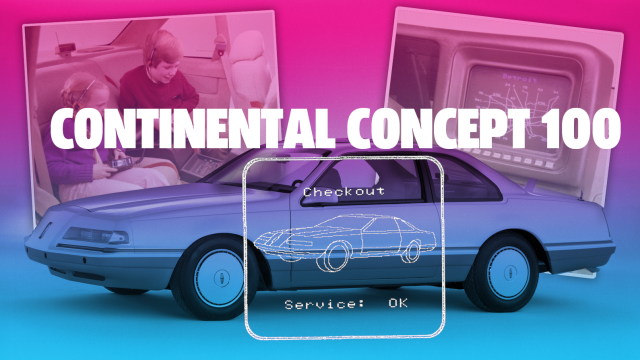Intellectually, we all know that the advancements and technological marvels that we all take for granted in modern cars — big centre-stack colour touchscreen displays, integrated computers, global navigation via a network of satellites, and even video game systems built right into the car — didn’t come out of nowhere. But it’s still surprising when you see just how far back some of these roots go. In the case of the modern novelties I’ve just mentioned here, you can find them all in a Ford concept car from almost 40 years ago. It was called the Continental Concept 100.
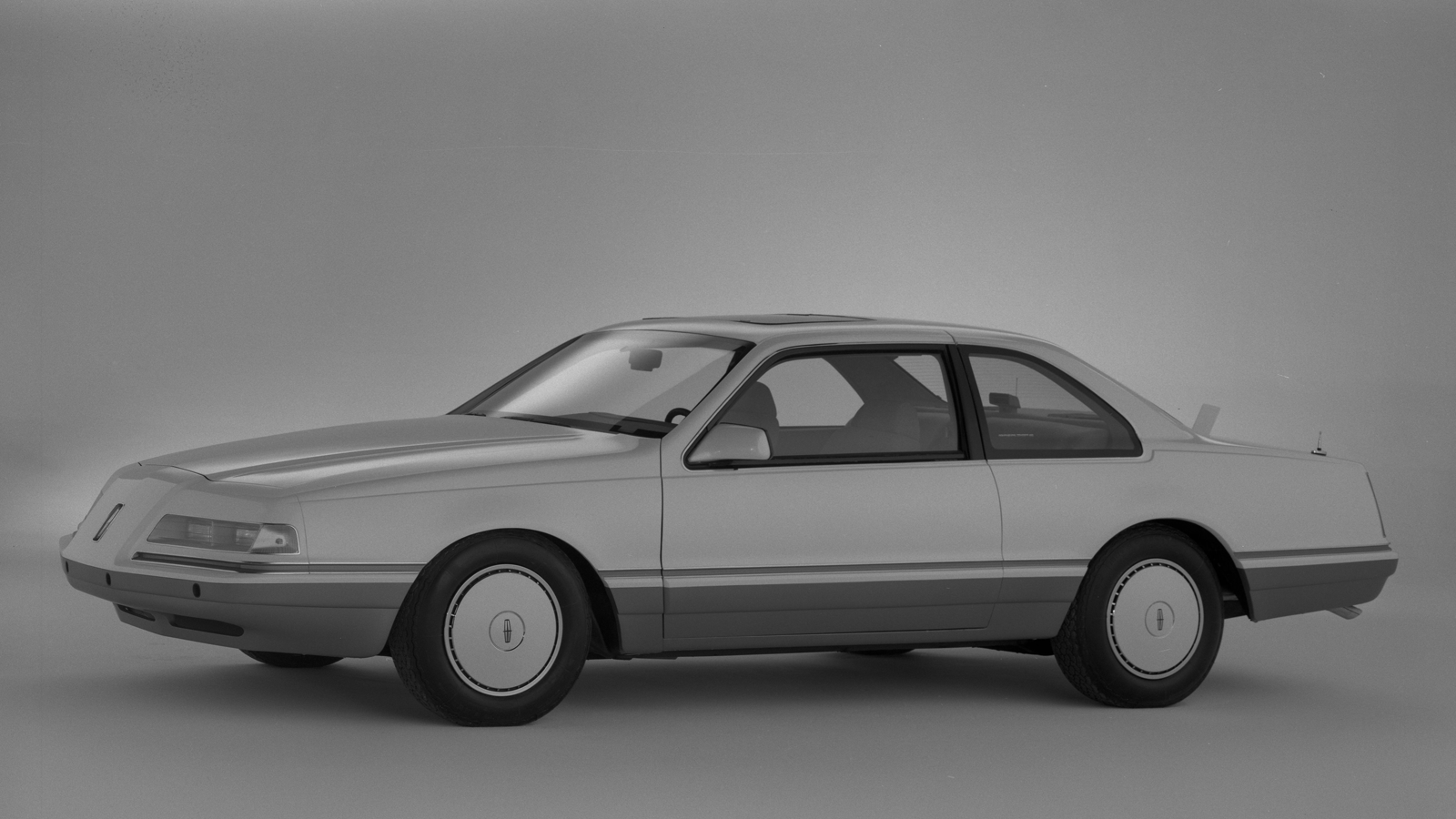
Design-wise, the concept car’s look was a preview of the upcoming 1984 Lincoln Continental Mark VII coupe’s more aerodynamic design language, but with a more unusual owl-face front end. Inside, there was a hell of a lot more going on.
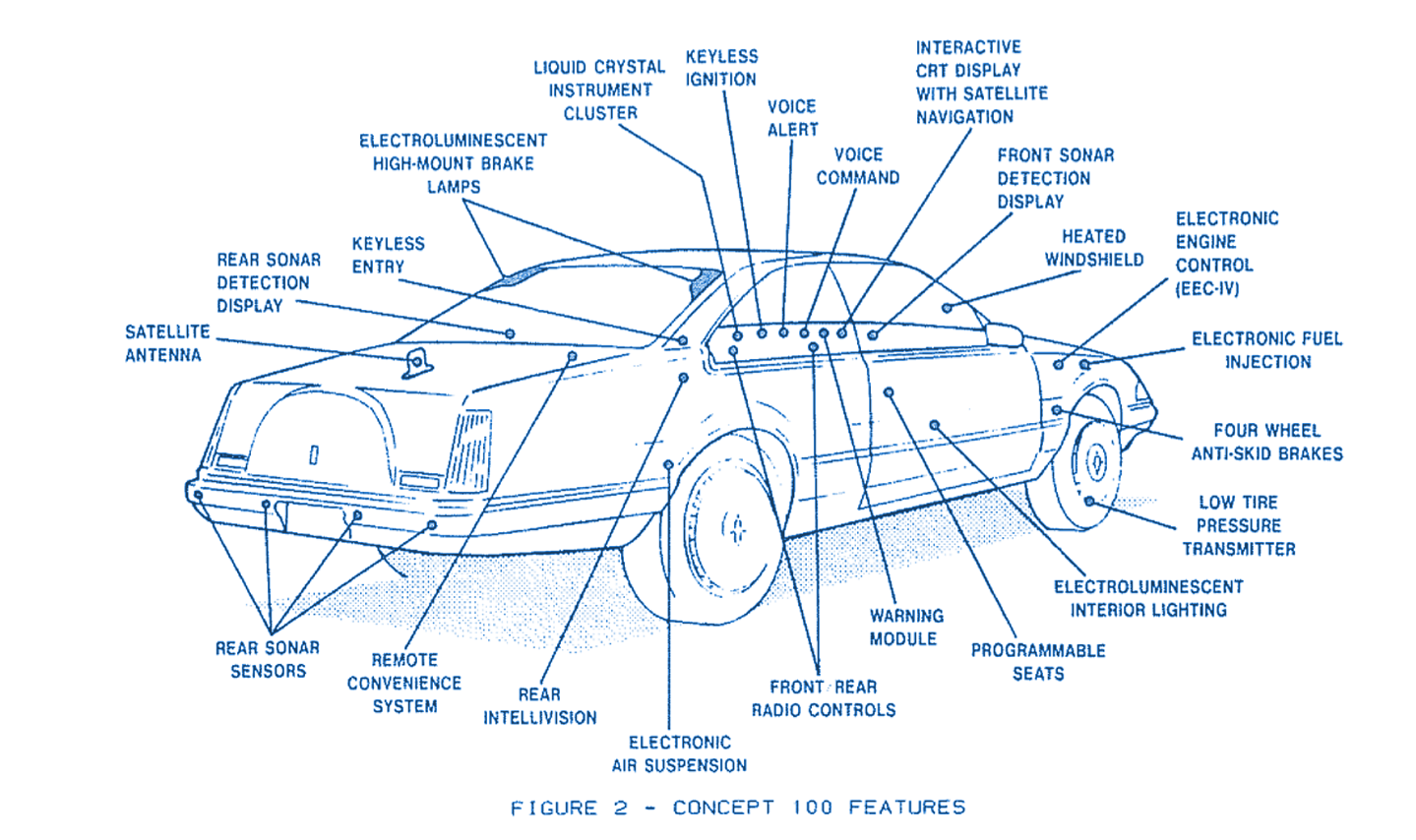
Yes, back in 1982 Ford showed off a concept car that had colour displays front and rear, the front one being a touchscreen that controlled all kinds of basic car functions — clock, thermometer, HVAC controls, trip computer, diagnostics — much like GM’s Graphic Control Centre that would roll out four years later:
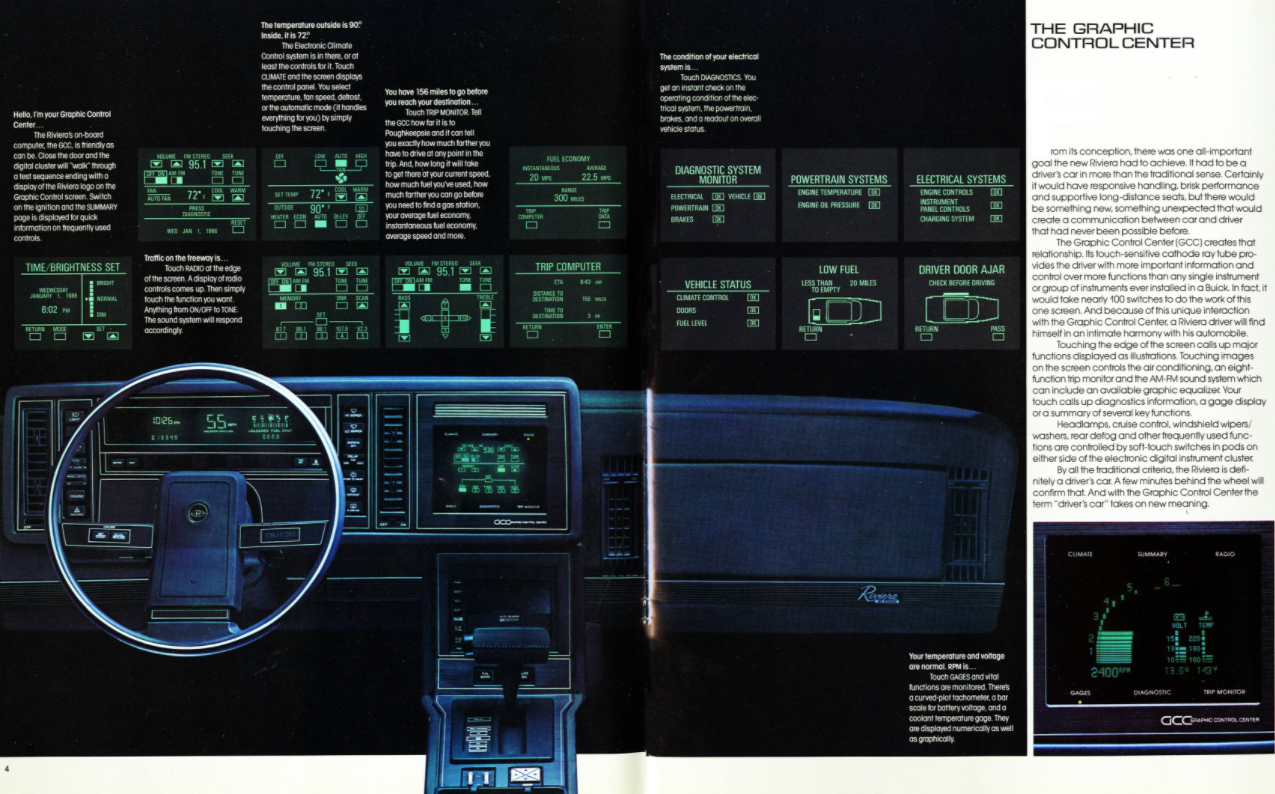
There are a few significant differences between GM’s setup and what Ford was showing in 1982. The biggest difference was that GM’s actually made it to market, but Ford had colour and one other thing that would prove incredibly forward-thinking: satellite-based navigation.
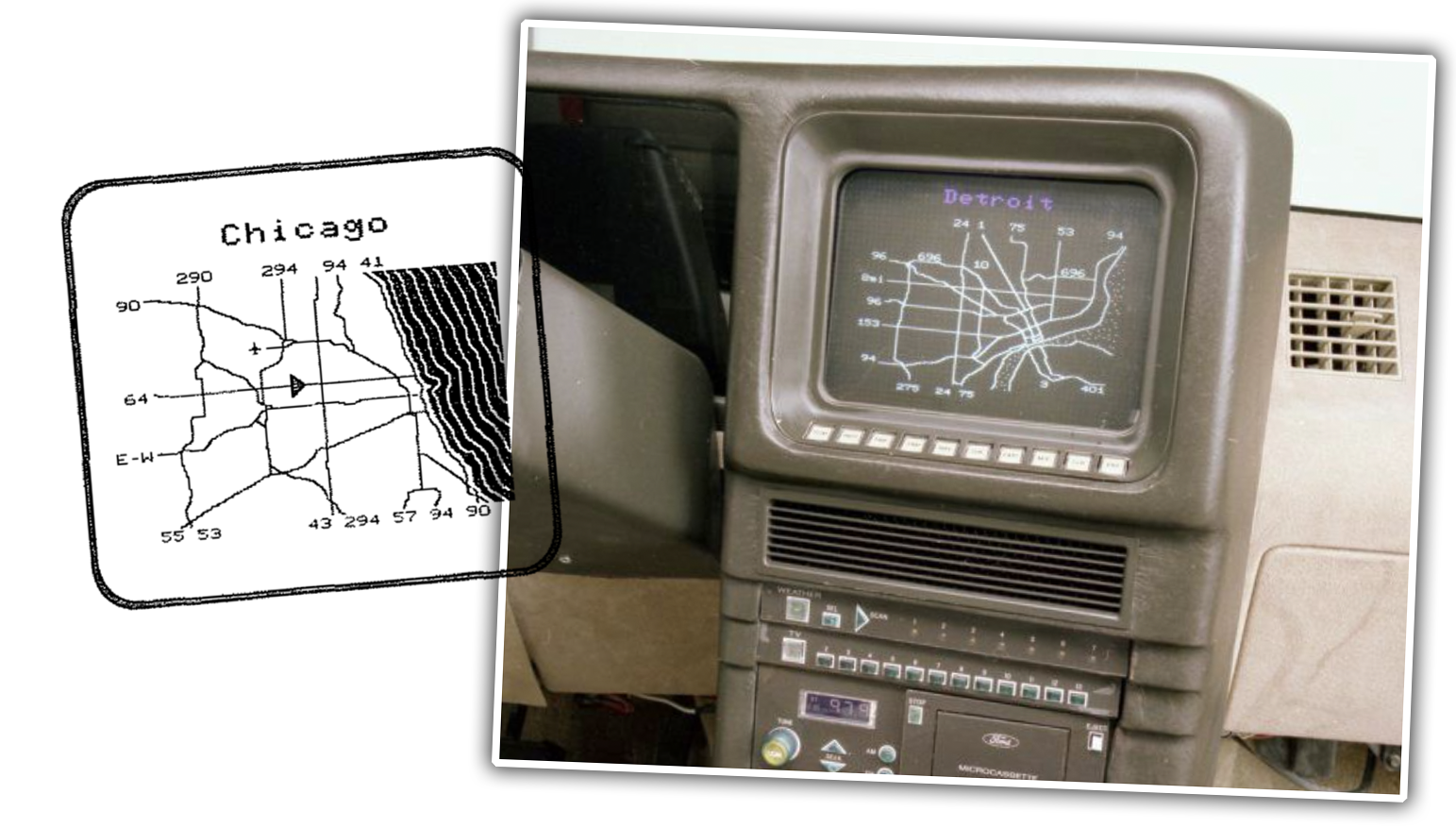
This is, of course, a huge, huge deal, as we all rely on satellite navigation to get to our own bathrooms now. It’s ubiquitous, which I suppose was kind of the point, and why the “G” in “GPS” stands for “global.”
Incredibly, though, Ford’s system in the Continental Concept 100, which it called “Tripmonitor,” pre-dates the widespread use of GPS, and, while the designers and engineers were aware of it and the project had started back in 1973, the system wasn’t really fully operational until 1995.
Instead, Ford relied on an older satellite navigation system called Transit, which began development way way back in 1958 and was in use by the U.S. Navy by 1964. Unlike GPS, which orbits its constellation of satellites at a medium Earth orbit (about 1,931 km) Transit satellites were in polar orbits of about 966 km up, forming a sort of “birdcage” around the planet.
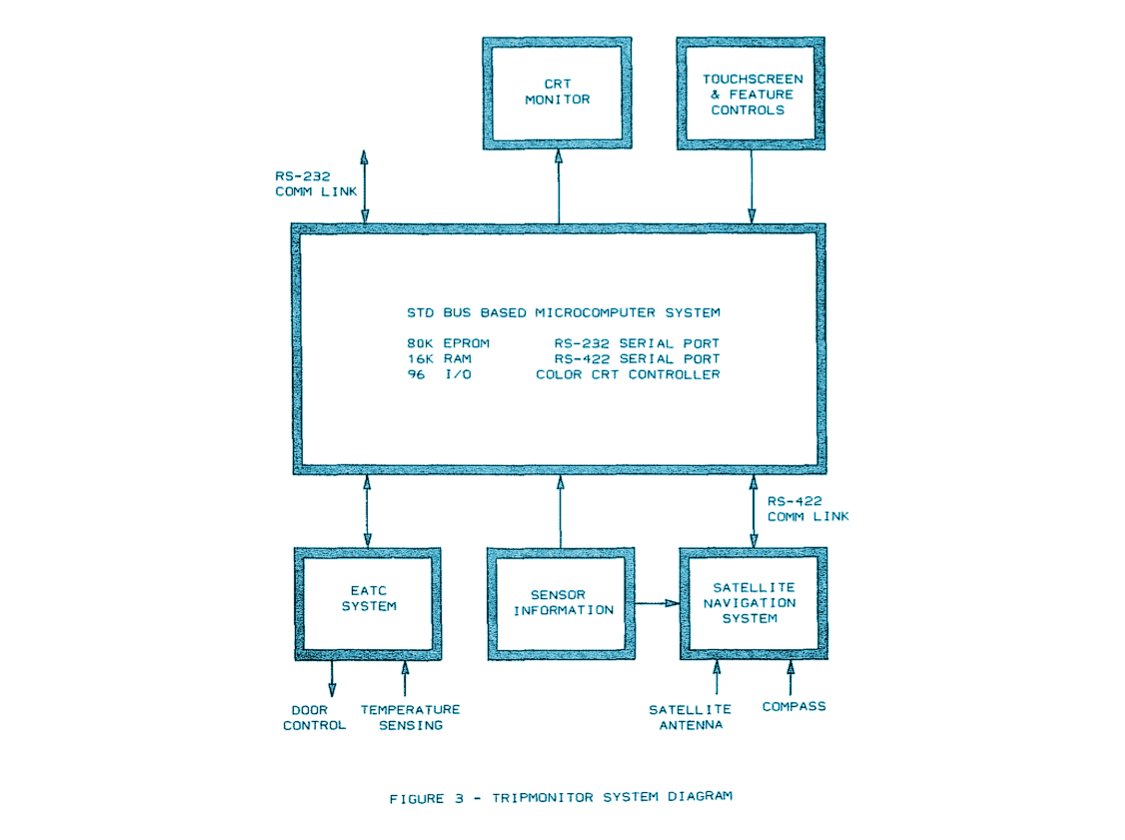
The Concept 100 was designed with a satellite radio system (the antenna is that funny-looking thing on the trunk, which picks up the Transit system’s 400 MHz signals) to communicate with the Transit network, and displayed the location data graphically, on a visual map that was stored in the Concept 100’s onboard computer’s 80K of EPROM memory.
The computer that ran the whole thing is interesting, too. Spec-wise, it’s very much like many other 1980s home computers; a Z80 CPU, 16K of RAM, eight-colour graphics with a resolution of 240×256 and are very similar specs to common computers of the era like a Sinclair Spectrum or a Coleco Adam.
And while I’m a painfully huge geek about ’80s-era computers, this one was based on an off-the-shelf system I wasn’t really aware of, because, well, those were not shelves I ever got access to back in the day: it was an STD Bus computer.
The STD standard was common for industrial-control applications but never really ever made it to the general consumer space. The rugged and flexible design does make it ideal for an in-car application, so it makes sense Ford would have chosen that.

I’m especially impressed with the high-resolution graphics (well, for the era) and the fact that it was able to use a crisp, nice RGB monitor for the display, as opposed to the composite monitors that were far more common back in the day.
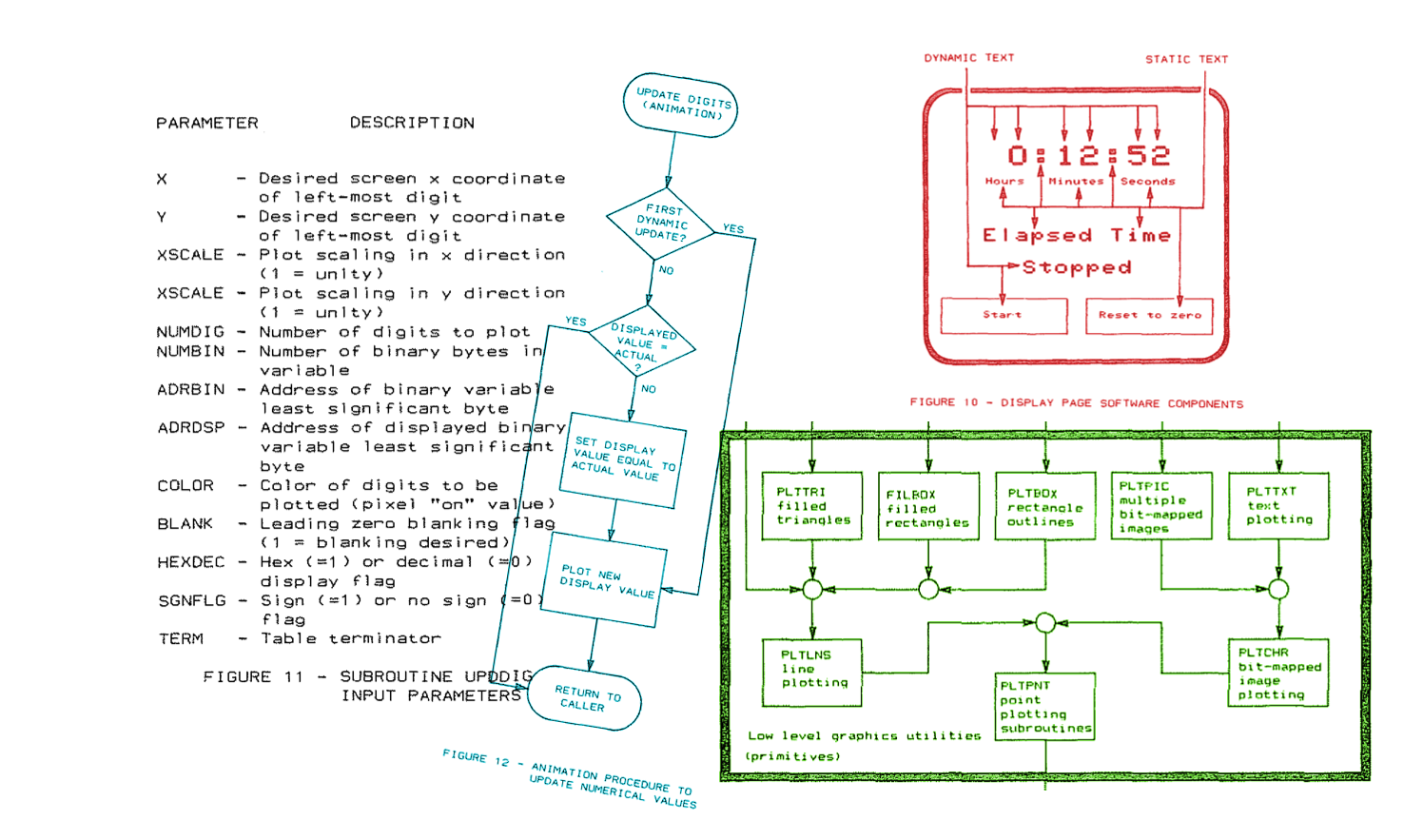
Ford’s coders also produced a fairly robust graphical display framework for the system that included the ability to draw lines and shapes, place text, set touch areas, show bitmap images, and even had some basic animation routines.
Really, this thing has primitive versions of so many modern-car features that it’s amazing. But I think I’m really taken by what’s in the back, even if it is technically less amazing, but it’s just so ’80s-cool: the Concept 100 had an integrated Mattel Intellivision.
Yes, an Intellivision! If you’re not like me, the sort of geek that makes people shove furniture and pets out of the way to avoid talking to at parties, you may not be aware of what one is, so I’ll tell you. The Intellivision was the runner-up to the famed Atari 2600 in the first real game console wars and was also the home game system to have what I think is the worst driving game ever.
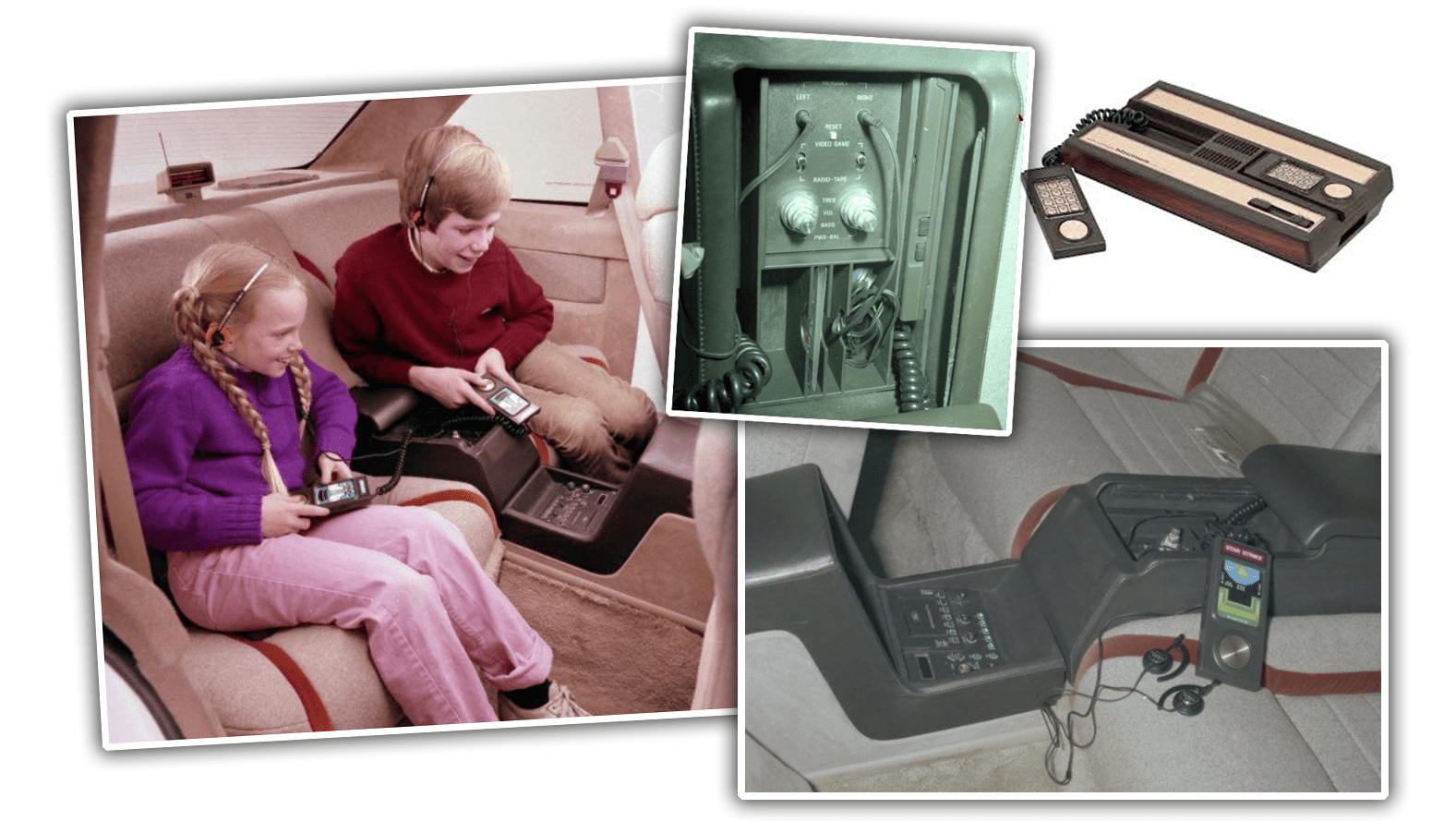
The Intellivision console seems to have been built into the centre armrest section in the back seat, complete with storage slots for the controllers, dual headphone jacks, and I think a place to store controller overlays. I suspect there was probably a place to store cartridges as well, even if I can’t see it here.
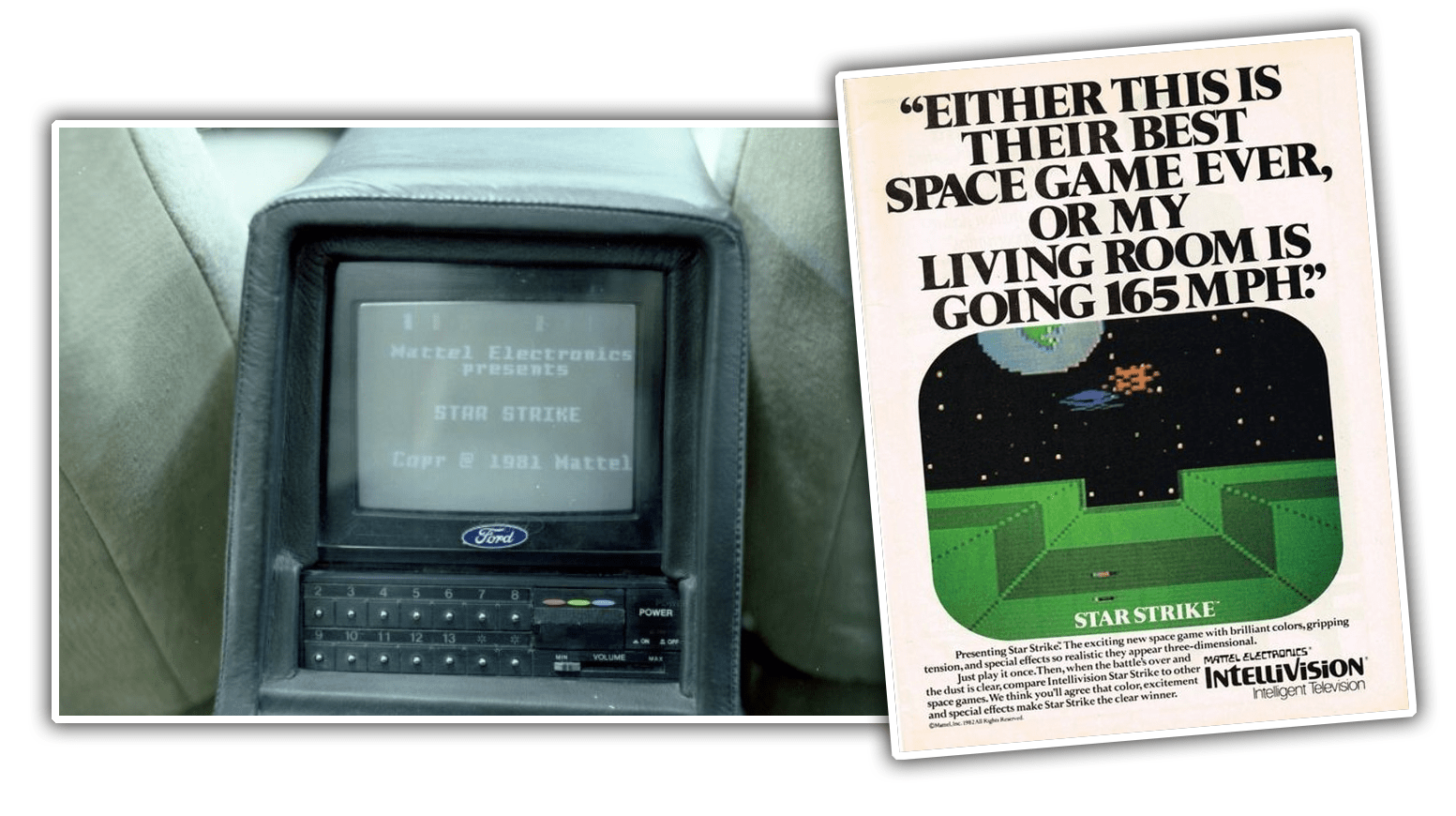
The Ford press photos I was sent show it playing the Star Strike game, a popular choice, and one I’m sure looked amazing on that little 9″ colour CRT jammed into that console.
There’s a lot of amazing things going on here — first, this may be the first concept car ever to feature an integrated video game system (maybe not the first private car, though, as the Batman of Birmingham’s Batmobile had an Atari in it in the early 1980s as well).
Also, I love that this very child-friendly feature showed up in a concept car that wasn’t a minivan, wasn’t a station wagon, wasn’t even a four-door sedan, but was rather a personal luxury coupé — a two-door car that would never, ever be considered a likely family car today, yet in 1982, that’s exactly how Ford outfitted this thing.
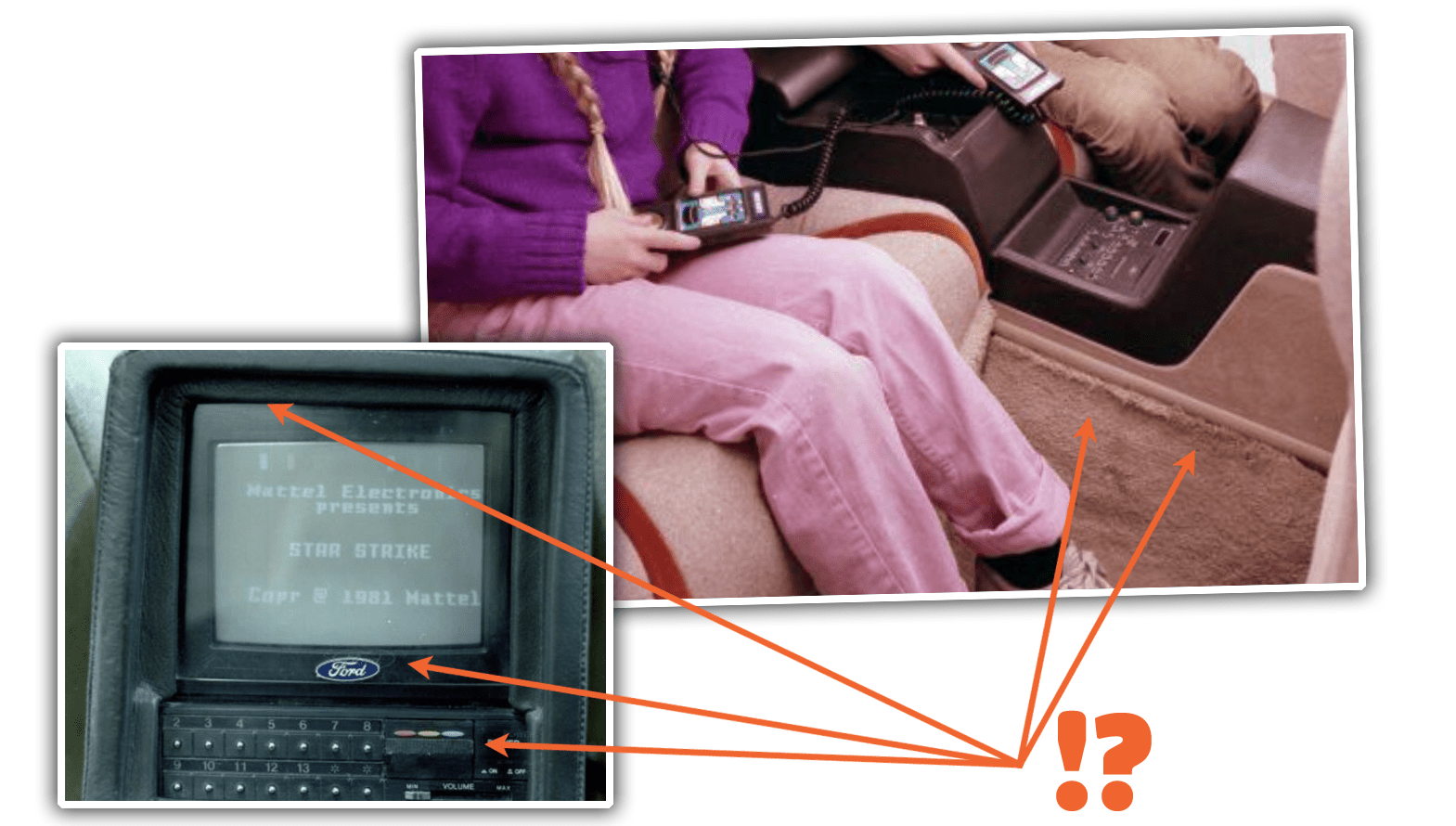
I also have to admit I love how kind of, you know, shitty the build quality on this seems to be. What’s going on with that carpet back there, and why is nothing on that rear monitor straight or aligned even remotely well in its housing? Everything seems crooked on there.
Anyone who has looked closely at any concept car probably wouldn’t be surprised by any of that, though — up close, they’re often kinda crappy. And, besides, that’s not what matters here.
What matters is that I’m amazed Ford doesn’t trot this thing out more often, as it really shows just how forward-thinking they were back in the 1980s, and this would be an amazing car to have around to compare to where we are today, and really see how all these amazing features started off.
All of these ideas were around before, in one form or another, but it’s possible that the Continental Concept 100 was the first to really put them all together.
Now squeeze in the back and let’s play some Night Stalker.
